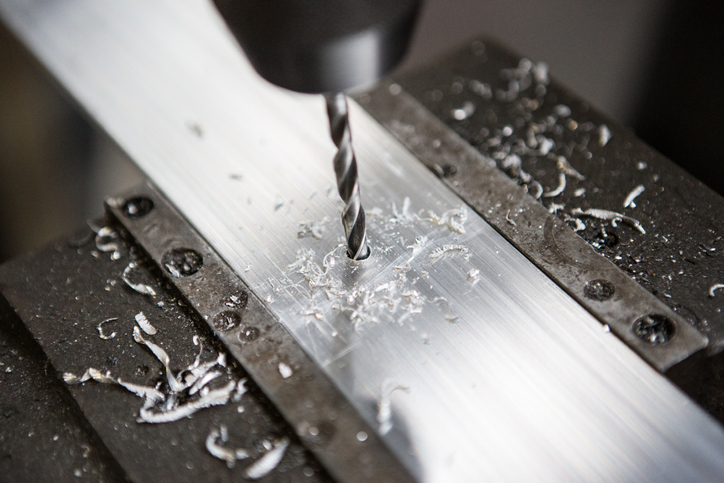Machining
The three principal machining processes are classified as turning, drilling and milling.
Turning operations involve the use of a cutting tool to shape a rotating workpiece into a cylindrical shape. This is achieved through the rotation of the workpiece as the primary motion, while the cutting tool slowly moves in a direction parallel to the axis of rotation to achieve the desired shape. Lathes are commonly used for turning and typically use a cutting tool with a single edge to remove material from the workpiece.
Milling operations involve the use of a cutting tool that rotates and brings its cutting edges in contact with the workpiece. A milling machine is used to perform this operation, spinning at high speeds while the workpiece is held in place.
By using a rotating cutter, a milling machine is capable of machining flat, curved, or custom surfaces with great precision. Milling machines are the primary machine tool used for milling operations.


Drilling operations involve the production or refinement of holes by using a rotating cutter with cutting edges to make contact with the workpiece.
These operations are usually performed using drill presses, but can also be done on lathes or mills. The drill bit is pressed against the workpiece and rotated at high speeds to create a hole of the desired size and depth.
The drill bit may also be moved up and down to produce holes of varying depths.
MANUAL MACHINING
Because not all components lend themselves to CNC machining, we offer manual machining which requires a lot more skill and intervention to operate. For less complex parts, this is often quicker and more cost-effective. Working from drawings or sketches, we work on bespoke new products and refurbishment parts.
We have the following machines:
Colchester Triumph 2000 lathe 15” swing 50” centres
Bridgeport milling machine 48×9 table size with digital readout.
